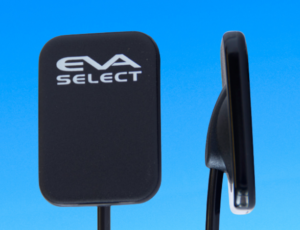What are the different types of dental x-ray machines and what are their advantages and disadvantages?
Many health clinics, hospitals, and traditional dental facilities may be considering adding dental x-ray to their facilities for the first time. However, they might not be fully aware of the key equipment needed for this purpose. This article aims to provide a comprehensive summary of the different types of dental x-ray machines along with their key options.
There are two fundamental types of dental x-ray: intraoral and extraoral.
Intraoral X-ray Machines
Intraoral x-ray machines create radiographs of the teeth by placing the sensor inside the patient’s mouth, while the x-ray source remains outside, typically against the patient’s cheek.
To capture intraoral dental x-rays, clinics will typically require the following equipment:
 X-ray Source: The dental x-ray source is the machine that is generating the x-ray. When many dental professionals refer to the “intraoral x-ray machine”, they are referring to this component. There are typically three main types of dental x-ray machines.
X-ray Source: The dental x-ray source is the machine that is generating the x-ray. When many dental professionals refer to the “intraoral x-ray machine”, they are referring to this component. There are typically three main types of dental x-ray machines.
- Wall Mounted X-rays: These units offer a more powerful output, resulting in better images even with less-than-ideal technique. However, they require mounting to a wall and cannot be easily moved to different locations.
- Handheld X-rays: Handheld units are easily portable, allowing for movement to different locations. However, their power output is typically only about 25% of wall-mounted units, which can make it difficult for inexperienced staff to consistently capture good images.
- Mobile X-rays: Mobile units are as powerful as wall-mounted x-rays but offer the ability to move through the clinic. However, they are not as compact as handheld units and require some floor space.

Intraoral Sensor: Dental sensors are the receptors, and are available in different sizes (Size 1, 1.5, 2). Size 1 sensors are most often used for pediatrics and Size 2 for adults. The size choice is a trade-off between comfort and diagnostic information. Smaller sensors will be more comfortable for the patient but will not record as much information.
Software: Traditional dental offices often prefer software to manage images, allowing for sharing throughout the office and attachment to insurance claims. Health care facilities managing a diverse set of x-ray modalities may prefer to manage dental x-rays in a centralized PACS. These facilities may also need to perform Worklist Queries and DICOM export steps in their work flows.
Positioners: A positioner holds the sensor in place and helps aim the x-ray. This is important because the sensor and x-ray source are two separate pieces of equipment, and aligning them with the desired anatomy can be challenging.
Computer: A computer is typically needed to run the software and manage physical communication with the rest of the network.
Extraoral X-ray Machines
 Extraoral x-ray machines position the sensor outside the mouth. The most common type of extraoral dental x-ray is the panoramic x-ray machine, where the patient rests their chin on a chinrest, and an automated scan occurs with the x-ray source on one side of the head and the sensor on the other side.
Extraoral x-ray machines position the sensor outside the mouth. The most common type of extraoral dental x-ray is the panoramic x-ray machine, where the patient rests their chin on a chinrest, and an automated scan occurs with the x-ray source on one side of the head and the sensor on the other side.
Two optional features that can be added to a panoramic dental x-ray include:
- Cephalometric: Primarily for orthodontists, it creates a 2D radiograph showing most of the patient’s head.
- Cone Beam (CBCT): Offers a 3D volume of the patient’s dentition.
Pros and Cons of Intraoral vs. Extraoral X-ray Machines
Intraoral X-ray Machines:
- Pros: Higher resolution, typically slightly lower cost (depending on the number of sensors required).
- Cons: Exam takes more time and requires more operator training to operate effectively. Smaller field of view shows less anatomy. Not as comfortable for the patient.
Extraoral X-ray Machines:
- Pros: Faster and less labor-intensive. Much more comfortable for the patient. Much less patient radiation. Shows more anatomy.
- Cons: Slightly more expensive, not as high resolution.
In conclusion, understanding the key components of dental x-ray machines is crucial for clinics looking to expand their dental services. Whether choosing intraoral or extraoral machines, each has its pros and cons, and the choice should be based on the clinic’s specific needs and preferences.
